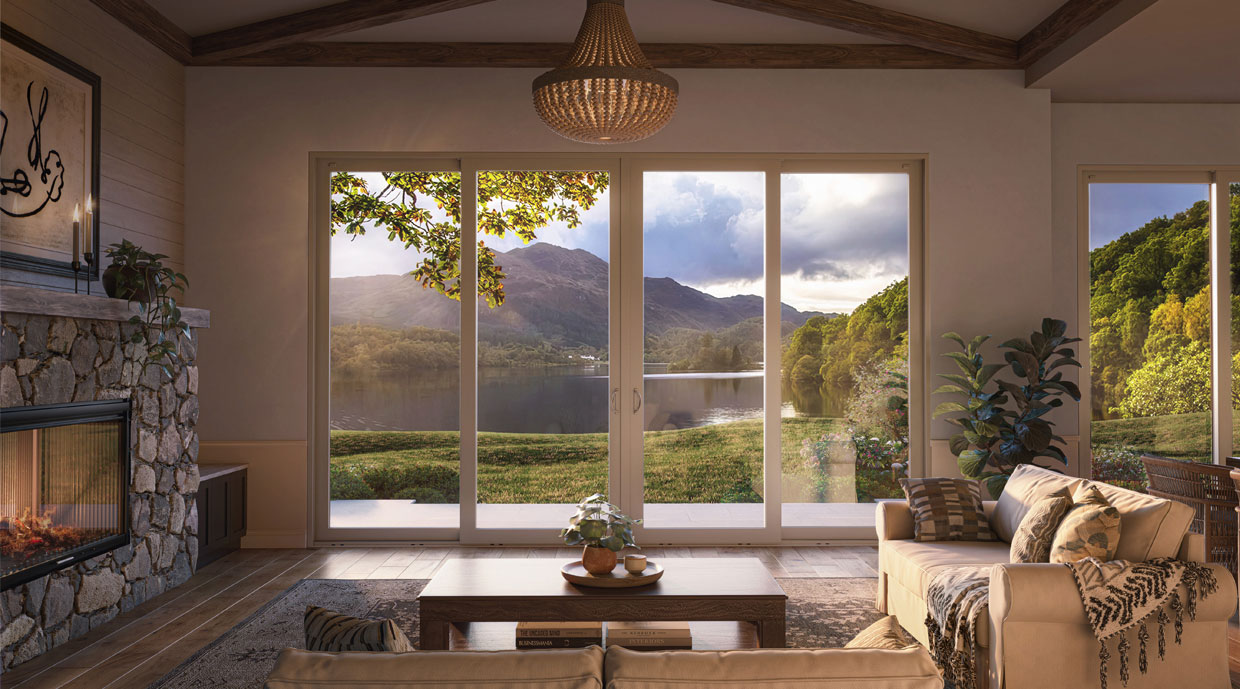Doors, Windows, Sustainable Building, Windows and Doors, Build Forward, Build Smart

In some regions of the country, summer ends more quickly, giving way to cool fall weather and cold, blustery winters. When building homes in these more northern regions, it’s essential to choose the right windows and doors with the glass options to improve the home’s insulation and help future homeowners lower their energy costs and maintain seasonal comfort.
The Department of Energy, through its ENERGY STAR® and Building America programs, provides builders with information and support for constructing homes suited to various climate regions across the U.S. Building America is a research program that develops and validates energy-saving technologies. Collaborating closely with ENERGY STAR, this organization shares its research insights to assist builders in constructing ENERGY STAR-certified homes. Together, these programs promote energy efficiency throughout the U.S. building industry. They guide builders in choosing the right building products and advise on the most effective installation techniques and best practices for their specific projects.
Building America established climate zones to help guide building practices and enhance home energy efficiency by considering heating and cooling degree-days, average temperatures and precipitation.

Consider Heating Degree Days for Colder Regions
Calculating heating degree days helps estimate the energy consumption to keep a home comfortable in colder areas. Degree days are used to measure how cold or warm a location is over time. They compare the average daily high and low temperatures to the standard reference temperature of 65°F in the United States. The greater the temperature difference, the higher the number of degree days, leading to more energy consumption for heating.
Regions classified as a Cold Climate experience between 5,400 and 9,000 heating degree days, based on a 65°F reference point. An area is classified as having a Very Cold Climate if it records between 9,000 and 12,600 heating degree days, using the same methodology.
Different window and door materials provide excellent insulation and reduce temperature transfer. Durable vinyl products enhance energy efficiency and provide excellent insulation performance. With precision, fusion-welded construction, the Ply Gem 1500 Vinyl Collection also offers weatherability and enhanced energy efficiency.
Aluminum-clad wood windows and doors, like the Ply Gem MIRA® Series, combine the exceptional insulation of wood with added protection of exterior aluminum-clad that protects against damage from moisture, weather and insects. Because aluminum windows and doors easily conduct heat and cold, they are not the best option for colder climates.
When choosing windows and doors for a new build or project in a colder climate, always start by referencing the U-factor and Solar Heat Gain Coefficient (SHGC). The U-factor of a window or door indicates its insulation capability. A lower U-factor means better insulation performance. A lower U-factor is best for cold-climate homes. The solar heat gain coefficient (SHGC) rating for windows and doors measures how much solar heat passes through into a home. Higher SHGC numbers are beneficial for colder climates, allowing more solar heat to pass into the home.
Installing dual-pane insulating glass units over single-pane glass is essential for windows and doors in colder climates. Dual-pane units consist of two glass panes separated by a low-conductance spacer, which forms a sealed and insulating air space. Argon gas can be placed between the panes for increased insulation. Triple-pane windows and doors provide impressive protection against heat loss, making them an excellent choice for cold climates. Many of these triple-glazed windows are recognized as ENERGY STAR Most Efficient of 2025, highlighting them as some of the highest-performing products available.

Different Low-E glass coatings are available to meet the needs of diverse climate zones. Whether the home needs help with heating or cooling, a Low-E glass can be selected to allow more or less solar heat to enter. For colder regions, ENERGY STAR recommends passive Low-E glass for windows and doors. This specialized Low-E glass allows the sun’s warmth to help with heating a home.
Controlling drafts is essential for maintaining home comfort and energy efficiency, so it’s important to look for windows and doors with low air leakage ratings. Not all window styles perform equally. Non-operable windows are best at preventing air infiltration because they are fixed and have no movable sash. Among operable windows, casement styles provide the most effective air infiltration protection, with the full sash sealing tightly around advanced weatherstripping. Double hung and sliding windows also offer effective draft protection, while choosing single hung or single slider styles with just one operable sash can further improve air infiltration performance.
Proper Installation
Window and door efficiency and performance rely on correct installation using flashing and insulating foam to add an extra barrier against air leaks. Be sure to follow the manufacturer’s installation instructions, like those provided by Ply Gem, to ensure proper installation of all windows and doors.
With a large portion of the northern United States located in cold and very cold regions, it is beneficial for builders to select windows and doors that offer optimal performance in helping to retain heat for new homes.
Explore Ply Gem’s wide selection of window and door styles, featuring advanced glass options designed to meet the needs of your cold climate projects.
Whether you’re a homeowner looking for a professional to help with installation or a pro interested in purchasing Ply Gem brands and product lines, we’ve got you covered.
